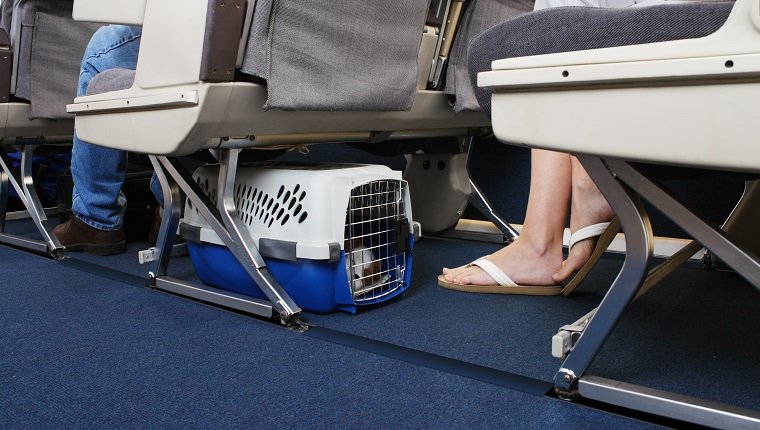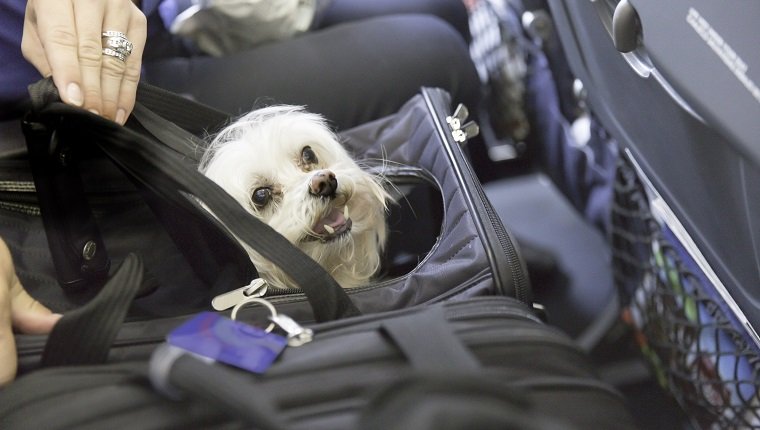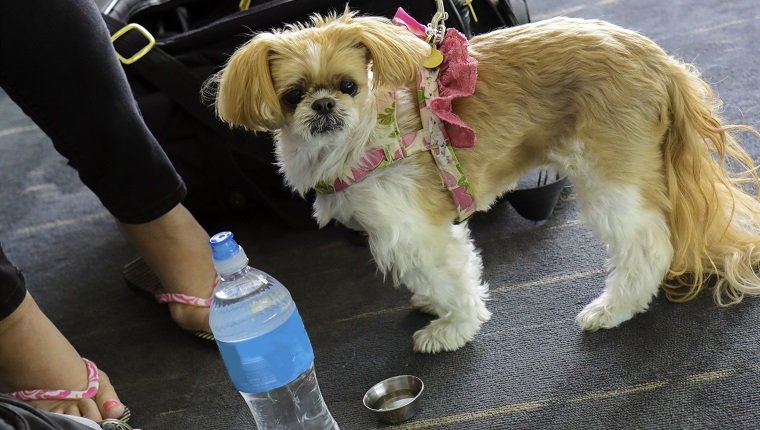Gold Souls, Gray Faces is a series dedicated to helping dog parents take care of their sweet senior pooches. Traveling with any dog by plane can be challenging, and for senior dogs with extra medical needs, aches and pains, and difficulty relaxing, it can be even more stressful.
In fact, I would always recommend driving or even traveling by train with an elderly dog before flying, but sometimes it’s just unavoidable.
If you must travel with your old dog by plane, make sure you and your pooch are as prepared as possible, and start planning well in advance so you can be ready to meet your senior’s needs and have a safe trip. Here are some tips for flying with your gray-faced pup.
1. Get Your Veterinarian’s Approval
Before you make any travel plans that include your dog, get a full veterinary check-up and ask your vet if it is safe for your dog to get on a plane.
Your dog’s health and safety are more important than your need to fly with them, no matter what.
You may ask your vet about tranquilizers or sedatives, but be aware that these are not always options for seniors. Also, medication may make your dog groggy and unable to balance during the trip. Use with extreme caution.
2. Find Out The Airline’s Rules

Some small dogs may be allowed to travel in the cabin if they are safely kept in a crate for the flight, but every airline is different with their policies on pets. Many are even cracking down on Emotional Support Animals (ESAs).
If your dog is a larger breed, it’s likely that they’ll have to ride in the cargo section, which may drastically change your plans. This is why you must start making calls, researching your airline, and figuring out your best options months in advance if possible.
Many airlines have requirements about which kinds of crates are allowed on board, as well.
3. Schedule Your Flight Around Your Dog’s Needs
Flights can be long, and your dog may need food or potty breaks, or they may need to keep to a medication schedule.
If you can, plan around this so the flight doesn’t overlap with these needs. A nighttime flight may be best if your dog can sleep through it, or you may wish to schedule in between meal times so your dog doesn’t get hungry and need to be fed during the flight.
Take all of your dog’s needs into consideration. The less you have to provide for them while in the air, the better off you’ll both be.
4. Bring Familiar Items

Old dogs can feel especially anxious in unfamiliar surroundings. Generally, they’re set in their ways and prefer to stick to what’s familiar.
Providing them with comfort items, including favorite toys, clothes that smell like you, or old blankets that they like will help to reduce their stress a bit.
5. Doggy Diapers Or Waist Bands
It’s not possible to walk your dog while you’re on a flight, so you may wish to provide them with doggy diapers or waist bands, especially if they have issues with incontinence.
This is definitely necessary for longer flights. You don’t want your dog to have to sit in yucky-ness for hours at a time.
Pet Parents brand has a lot of options for seniors who have accidents. Click here and use the code DOGTIMEFAN at checkout for 15 percent off your Pet Parents purchase! Your purchase helps support our content.
6. Provide Water

If you have a long flight, your dog is going to get thirsty. Nervous dogs tend to need even more water.
Check to see how much water you can carry with you if your dog is allowed to ride in the cabin. Also, find out if water will be available on the flight.
If your dog is not able to travel in the cabin with you, you can freeze a container of water and place it in their crate. This will keep it from sloshing around or spilling.
7. Comfortable, Supportive Bedding
Your old dog probably has some aches and pains, and these can get even worse when they’re cooped up in a crate for several hours.
Make it as comfortable as possible by providing bedding that will give them support and ease some of the stress on their old bones and joints. You can even ask your vet about recommendations for proper ways to keep them comfy.
What other tips do you have for traveling by air with an old dog? Are there any other topics about seniors you’d like to see covered in our Gold Souls, Gray Faces series? Let us know in the comments below!









